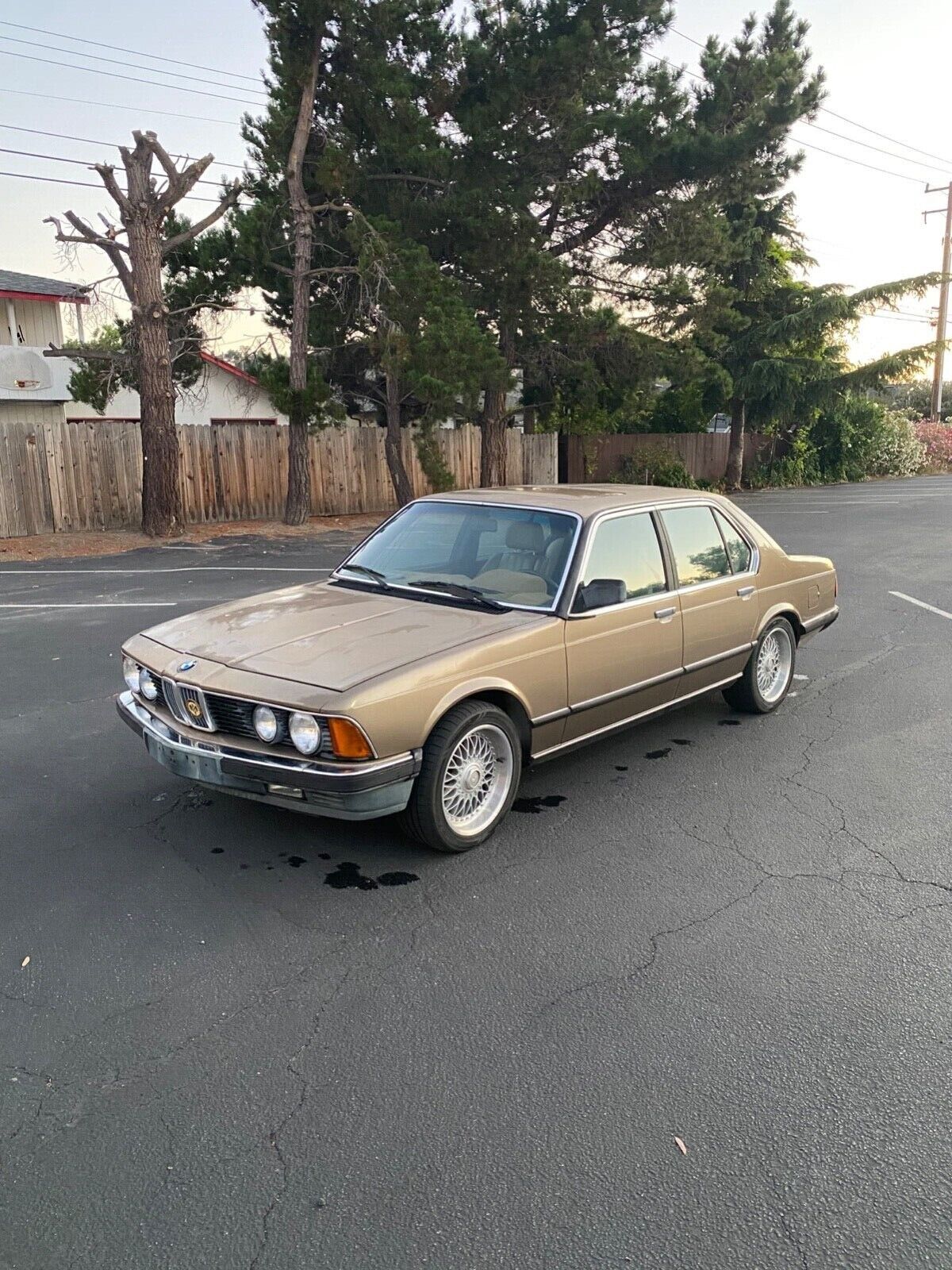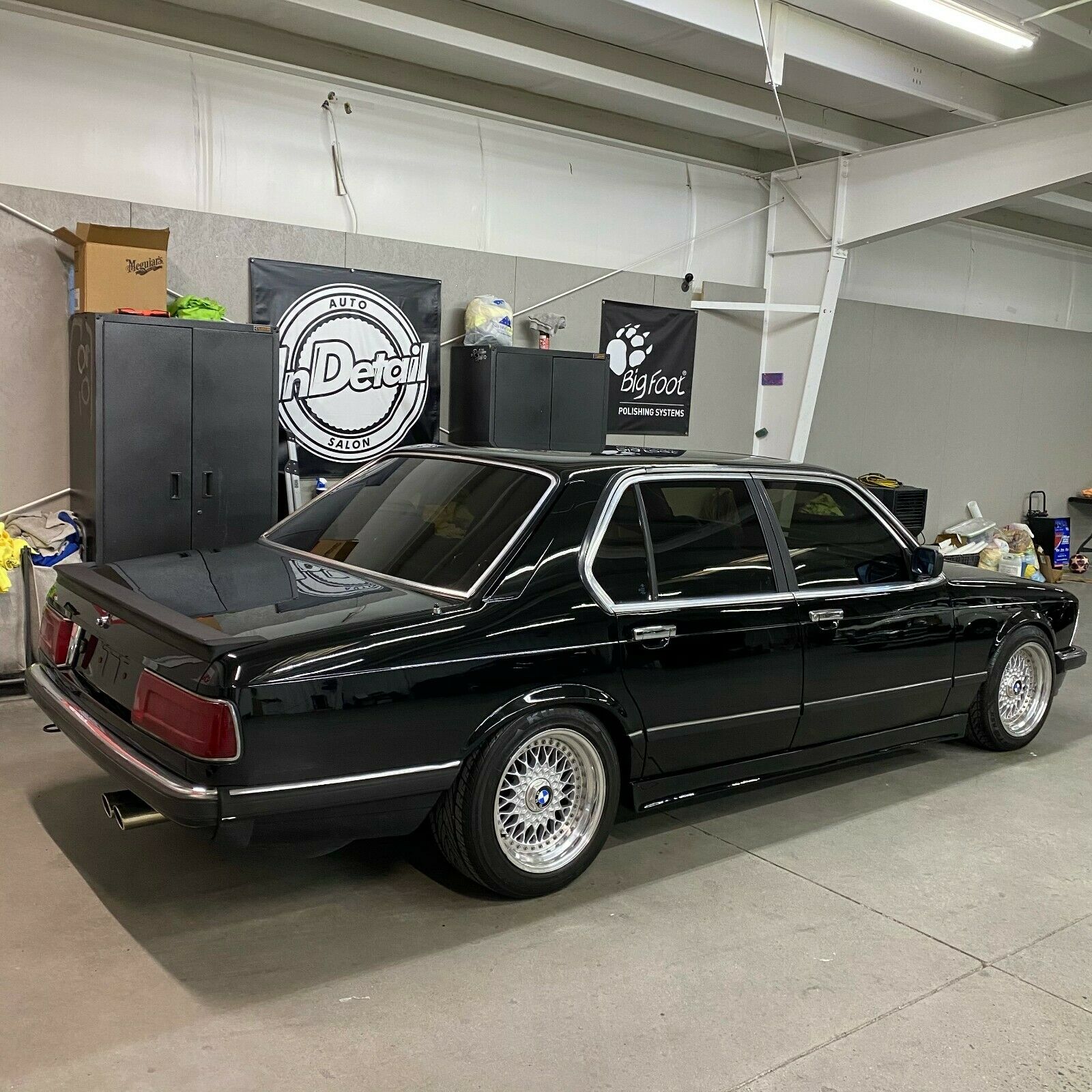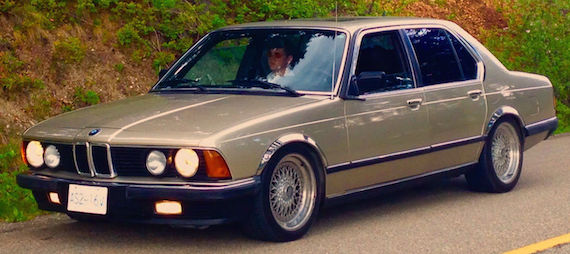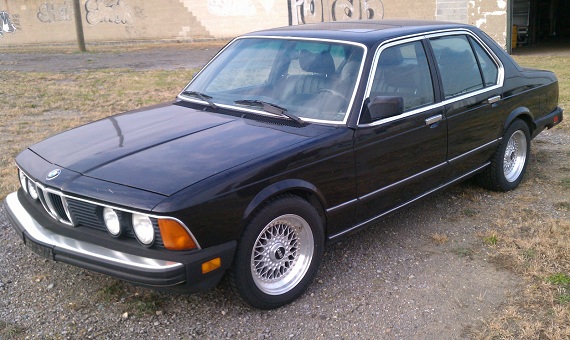The E23 has always been a design which to me has been quite polarizing. As with the E12 and E24, Paul Bracq was heavily involved in the final design and it shows – in many ways, the E23 looks like a cross between the two that was scaled up 10%. The results of that in my mind weren’t always good. Growing up, my father had both E24s and E28s, clean looking, well proportioned designs, and when I first saw an E23 I remember thinking it looked a bit ungainly. In U.S. specification, the bumpers were too big and the wheels were too small, resulting in a car which appeared heavy, sagging and sad. When he’s really upset, my son manages to invert his lip and stick it out, tears streaming down his cheeks. It’s a look which nearly mimics the U.S. spec front end of the E23 I now recognize. However, in European trim the E23 made more sense – it looked lighter, smaller and better proportioned. While not as stately as the W116, it certainly looked a fair bit sportier outside and more modern. Couple those European-market looks with the potent performance of the M106 and sprinkle in some sport seats and a 5-speed manual from an E28, and there’s a lot to like here – though today’s car is pretty firmly in “project” status:
Tag: m106
The E23 has always been a design which to me has been quite polarizing. As with the E12 and E24, Paul Bracq was heavily involved in the final design and it shows – in many ways, the E23 looks like a cross between the two that was scaled up 10%. The results of that in my mind weren’t always good. Growing up, my father had both E24s and E28s, clean looking, well proportioned designs, and when I first saw an E23 I remember thinking it looked a bit ungainly. In U.S. specification, the bumpers were too big and the wheels were too small, resulting in a car which appeared heavy, sagging and sad. When he’s really upset, my son manages to invert his lip and stick it out, tears streaming down his cheeks. It’s a look which nearly mimics the U.S. spec front end of the E23 I now recognize. However, in European trim the E23 made more sense – it looked lighter, smaller and better proportioned. While not as stately as the W116, it certainly looked a fair bit sportier outside and more modern. Couple those European-market looks with some great period BBS RS wheels and the look is just about perfect; throw in the turbocharged M106 motor and you’ve peeked much interest. Of course, unfortunately the M106 was only pared with an automatic transmission – but then, what would happen if you swapped that for a 5-speed?
CLICK FOR DETAILS: 1984 BMW 745i 5-Speed on eBay
1 CommentE23s are pretty sweet luxury cruisers, starting the long line of BMW’s 7-series that have provided a sportyish option for businessfolk. While the E38 was the pinnacle and rumors of an M7 seem to have a little more traction than ever before, the original badass was the turbocharged 745i. With the exception of South Africa’s 745i which featured the M5’s M88 engine, the M106 turbocharged the venerable M30 3.4-liter inline-6, giving a healthy power and torque boost for the big poppa. This example doesn’t have the incredible water buffalo leather interior, but it does have lots of chrome – all the way to the wheel arches. The M106 can’t be the easiest engine to maintain, but 136k miles and no reserve, this could be a nice shot at an old-school Euro megasedan.
Click for details: 1984 BMW 745i on eBay
1 CommentThe E23 has always been a design which to me has been quite polarizing. As with the E12 and E24, Paul Bracq was heavily involved in the final design and it shows – in many ways, the E23 looks like a cross between the two that was scaled up 10%. The results of that in my mind weren’t always good. Growing up, my father had both E24s and E28s, clean looking, well proportioned designs, and when I first saw an E23 I remember thinking it looked a bit ungainly. In U.S. specification, the bumpers were too big and the wheels were too small, resulting in a car which appeared heavy, sagging and sad. When he’s really upset, my son manages to invert his lip and stick it out, tears streaming down his cheeks. It’s a look which nearly mimics the U.S. spec front end of the E23 I now recognize. However, in European trim the E23 made more sense – it looked lighter, smaller and better proportioned. While not as stately as the W116, it certainly looked a fair bit sportier outside and more modern. Couple those European-market looks with some great period BBS RS wheels and the look is just about perfect; throw in the turbocharged M106 motor and you’ve peeked much interest. Of course, unfortunately the M106 was only pared with an automatic transmission – but then, what would happen if you swapped that for a 5-speed?







